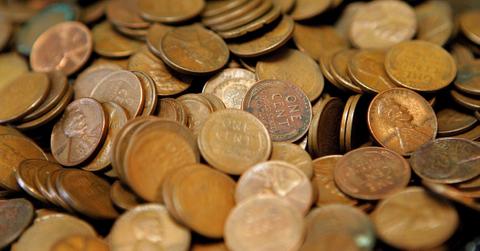Why Do We Still Have Pennies? U.S. Mint Plans to Phase Them Out
The national coin shortage is making economists wonder if it's worth producing some coins. Why do we still have pennies? Will the COVID-19 pandemic phase them out?
Jan. 17 2022, Published 11:48 a.m. ET

The national coin shortage and the emergence of digital currency are making economists question the value of real money, specifically pennies. The lowest-valued coin in U.S. circulation might be more costly to keep than to get rid of.
If the U.S. Mint decides to stop producing pennies, the country would join a list of many others that have done the same.

What does it cost to produce pennies?
The U.S. Mint's most recent annual report showed that an estimated $85.4 million from penny production was lost by taxpayers (along with $33.5 million from producing nickels, which might be ceased as well.) As of 2021, it cost more than 2 cents to make one penny. In 2019, pennies accounted for over half (59 percent) of the 12 billion coins that the U.S. Mint manufactured that year.
There are pros and cons to eliminating pennies.
Groups that heavily oppose eliminating the use of pennies argue that American charities often rely on penny donations—people are the most willing to give pennies away. Some people also think that getting rid of the penny would create a 1-cent sales tax. Businesses would be able to implement this tax easily since many prices end in 99 cents.
An economics professor at Wake Forest University, Robert Whaples, commented on the penny being phased out. He said, “Right now, with the coin shortage, is a good opportunity to seize the issue.”
A professor at Harvard, N. Gregory Mankiw, agreed. He said that the argument for getting rid of the penny has increased over time since inflation has lowered the purchasing power of the penny. The U.S. wouldn’t be the first country to cease production on the penny—Canada, Britain, and Australia have left behind their smallest valued coins as well.
What does the future look like for pennies?
The U.S. Mint announced that it will start to phase out the production of the penny by the end of 2022. The last batch of pennies will be minted on April 1, 2023. When the minting process is complete, the last batch will be sent out in proof sets to be auctioned to coin collectors. The proceeds will be used toward paying the U.S. national debt. Proofs were reportedly targeted to be at 50,000 sets with opening bids at $179.99.
Since the U.S. Mint will stop producing pennies, trying to navigate using the ones still in circulation will be tricky. Although pennies won't be made anymore, they will still be considered legal tender. Stores might not be inclined to accept pennies as payment. So, how will stores handle not using pennies anymore? It's reported that when penny production ceases, the U.S. Mint will implement a handling fee for any purchasing or processing of pennies, as well as a buyback incentive.
The “Pennies for Freedom” initiative, which seeks to collect the estimated 23 trillion pennies that sit in homes across the U.S., will start in late 2022. When the pennies are collected, they will be melted for renewable energy projects as part of an initiative by the Biden administration to reduce how much foreign energy the U.S. consumes.
